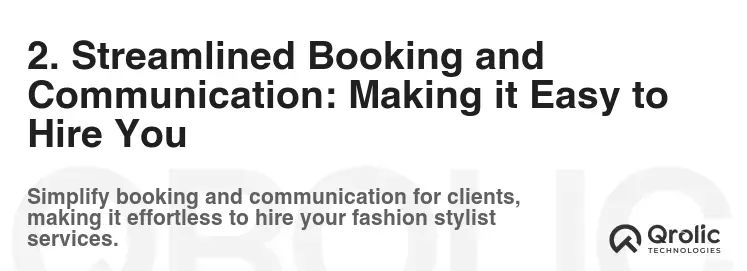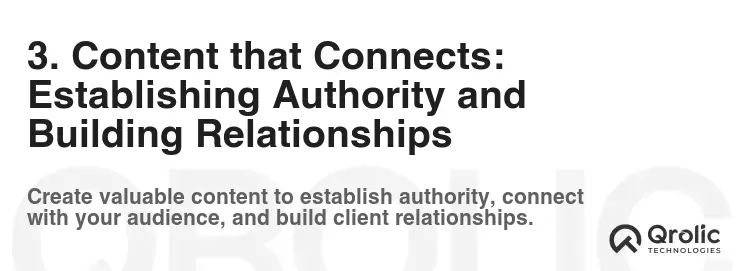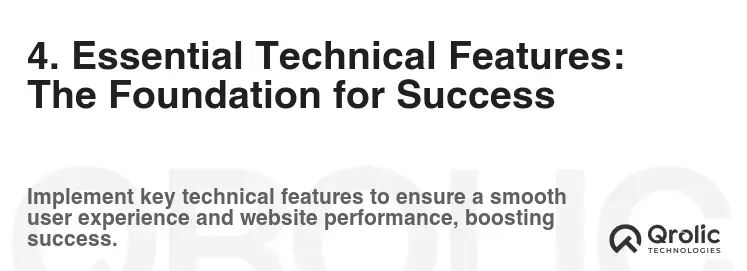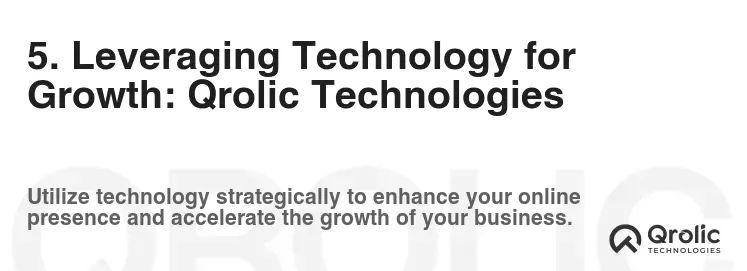Fashion stylists, the architects of personal image and purveyors of sartorial confidence, need a digital presence as sharp and stylish as their own creations. Your website is not just an online brochure; it’s a virtual studio, a portfolio showcase, and a client acquisition engine, all rolled into one. But what exactly separates a good stylist website from a truly exceptional one? It’s all about the features.
This guide dives deep into the essential and innovative website features that can elevate your online presence, attract your ideal clients, and streamline your business operations. We’ll explore the “what,” “why,” “when,” “how,” and “benefits” of each feature, providing practical strategies and actionable tips to ensure your website reflects your unique style and professionalism. Get ready to transform your website into a powerful tool for success.
Quick Summary:
- Showcase your stunning styling work visually.
- Make booking and contact easy for clients.
- Share valuable style tips and client success stories.
- Ensure your website is fast and mobile-friendly.
Table of Contents
- 1. A Visually Stunning Portfolio: Your Digital Runway
- 1.1. High-Quality Photography: Seeing is Believing
- 1.2. Lookbooks: Storytelling Through Style
- 1.3. Before & After Transformations: The Power of Visual Impact
- 2. Streamlined Booking and Communication: Making it Easy to Hire You
- 2.1. Online Booking System: Convenience at Their Fingertips
- 2.2. Contact Form: A Direct Line to Your Expertise
- 2.3. Integrated Chat Feature: Instant Connection
- 2.4. Booking Forms: Detailed Client Profiles
- 3. Content that Connects: Establishing Authority and Building Relationships
- 3.1. Blog: Your Style Guide to the World
- 3.2. Style Guides: Your Personalized Fashion Bible
- 3.3. Client Testimonials: Social Proof That Sells
- 4. Essential Technical Features: The Foundation for Success
- 4.1. Mobile Responsiveness: Style on the Go
- 4.2. Fast Loading Speed: Instant Gratification
- 4.3. SEO Optimization: Getting Found Online
- 5. Leveraging Technology for Growth: Qrolic Technologies
- Conclusion: Your Website: A Stylish Investment
1. A Visually Stunning Portfolio: Your Digital Runway

1.1. High-Quality Photography: Seeing is Believing
What: A portfolio showcasing your best work through professionally captured photographs. This is the cornerstone of your credibility as a fashion stylist.
Why: Potential clients need to see your talent. High-quality images demonstrate your eye for detail, your ability to create compelling looks, and your understanding of current trends. Think of it as your visual resume.
When: Prioritize this from the moment you launch your website. Continuously update it with your latest and greatest projects.
How:
- Invest in Professional Photography: Partner with photographers who specialize in fashion or portraiture. Their expertise will ensure your work is presented in the best possible light.
- Curate Carefully: Don’t include everything you’ve ever done. Select only the strongest, most representative pieces that align with the type of clients you want to attract.
- Variety is Key: Show a range of styles, body types, and occasions to demonstrate your versatility.
- Optimize Images for Web: Compress images to reduce loading times without sacrificing quality. Use descriptive file names and alt text for SEO.
Benefits:
- Establishes Credibility: Showcasing your best work builds trust and confidence with potential clients.
- Attracts Ideal Clients: A well-curated portfolio attracts clients whose aesthetic aligns with your own.
- Sets You Apart: Differentiate yourself from the competition by showcasing your unique style and expertise.
- Drives Inquiries: Compelling visuals encourage visitors to learn more about your services and contact you.
1.2. Lookbooks: Storytelling Through Style
What: Curated collections of images showcasing themed outfits or styling concepts, presented in a visually appealing, magazine-style layout. Lookbooks allow you to express your creative vision and demonstrate your ability to put together complete looks.
Why: Lookbooks go beyond individual outfits, telling a story and providing inspiration for potential clients. They showcase your ability to create cohesive and stylish ensembles for various occasions and personal styles.
When: Create lookbooks seasonally, for specific events, or to showcase different styling niches (e.g., bridal, corporate, casual).
How:
- Theme-Based Collections: Group outfits around a specific theme, such as “Spring Trends,” “Office Chic,” or “Bohemian Vacation.”
- High-Quality Layout: Use a clean and modern design that is easy to navigate. Consider using professional graphic design software or online lookbook creation tools.
- Detailed Descriptions: Provide detailed descriptions of each outfit, including information about the clothing, accessories, and styling techniques.
- Interactive Elements: Add links to purchase items or book styling services for a seamless user experience.
- Mobile Optimization: Ensure your lookbooks are easily viewable and navigable on all devices.
Benefits:
- Showcases Creativity: Allows you to express your artistic vision and demonstrate your styling skills in a more comprehensive way.
- Provides Inspiration: Inspires potential clients with outfit ideas and styling tips.
- Increases Engagement: Interactive lookbooks keep visitors engaged and encourage them to explore your services.
- Drives Sales: Linking to shoppable items can directly drive sales and commissions.
1.3. Before & After Transformations: The Power of Visual Impact
What: Side-by-side comparisons of clients before and after your styling services. This visually demonstrates the impact of your work.
Why: Before & After transformations provide tangible evidence of your skills and the value you bring to your clients. They are powerful testimonials that resonate with potential clients who are looking to improve their personal style.
When: Include Before & After photos whenever possible, especially for personal styling or makeover services. Always obtain client consent before publishing their images.
How:
- Consistent Photography: Ensure consistent lighting, angles, and poses in both the “before” and “after” photos.
- Focus on the Transformation: Highlight the key changes in the client’s style, such as clothing, hair, makeup, and accessories.
- Client Testimonials: Include a brief testimonial from the client about their experience and the results they achieved.
- Ethical Considerations: Always obtain written consent from clients before using their images and testimonials. Respect their privacy and preferences.
Benefits:
- Demonstrates Value: Visually demonstrates the tangible benefits of your styling services.
- Builds Trust: Shows potential clients that you can deliver real results.
- Increases Confidence: Encourages potential clients to take the leap and invest in your services.
- Drives Conversions: Compelling transformations can be a powerful motivator for potential clients to book a consultation.
2. Streamlined Booking and Communication: Making it Easy to Hire You

2.1. Online Booking System: Convenience at Their Fingertips
What: An integrated system that allows clients to schedule appointments, select services, and make payments directly through your website.
Why: Eliminates the back-and-forth of email or phone scheduling, making it easier and more convenient for clients to book your services. This streamlines your workflow and allows you to focus on your clients.
When: Implement an online booking system as soon as possible to improve efficiency and client satisfaction.
How:
- Choose a Booking Platform: Select a reputable booking platform that integrates seamlessly with your website (e.g., Acuity Scheduling, Calendly, Square Appointments).
- Customize Your Calendar: Set your availability, appointment durations, and pricing.
- Offer Package Deals: Create packages of services that clients can easily book online.
- Automate Reminders: Set up automated email and SMS reminders to reduce no-shows.
Benefits:
- Increases Efficiency: Streamlines the booking process and reduces administrative tasks.
- Improves Client Experience: Provides a convenient and user-friendly booking experience.
- Reduces No-Shows: Automated reminders help clients remember their appointments.
- Increases Revenue: Makes it easier for clients to book your services, leading to increased revenue.
2.2. Contact Form: A Direct Line to Your Expertise
What: A simple and user-friendly form that allows potential clients to easily contact you with inquiries.
Why: Provides a clear and convenient way for visitors to reach you without having to search for your email address. This ensures that you receive all inquiries and can respond promptly.
When: Include a contact form on your homepage, contact page, and service pages.
How:
- Keep it Simple: Ask for only essential information, such as name, email address, and a brief message.
- Use a Captcha: Prevent spam submissions with a captcha.
- Provide a Confirmation Message: Let visitors know that their message has been received and that you will respond within a certain timeframe.
- Integrate with Your CRM: Connect your contact form to your CRM system to manage leads and track communication.
Benefits:
- Captures Leads: Collects valuable contact information from potential clients.
- Facilitates Communication: Provides a convenient way for visitors to reach you with inquiries.
- Improves Response Time: Allows you to respond promptly to inquiries, increasing the likelihood of securing new clients.
- Reduces Spam: Captcha prevents spam submissions and keeps your inbox clean.
2.3. Integrated Chat Feature: Instant Connection
What: A real-time chat feature that allows you to communicate with website visitors instantly.
Why: Provides immediate assistance and answers questions, increasing engagement and converting visitors into clients. This is especially helpful for addressing urgent inquiries or providing personalized recommendations.
When: Consider adding a chat feature if you want to provide instant support and increase engagement.
How:
- Choose a Chat Platform: Select a chat platform that integrates seamlessly with your website (e.g., Tawk.to, Zendesk Chat, LiveChat).
- Set Availability: Indicate your availability for chat support.
- Train Your Team: Ensure that your team is trained to provide excellent customer service through chat.
- Use Automated Responses: Set up automated responses to common questions.
Benefits:
- Provides Instant Support: Offers immediate assistance and answers questions.
- Increases Engagement: Keeps visitors engaged and encourages them to explore your services.
- Improves Conversion Rates: Converts visitors into clients by providing personalized recommendations and addressing concerns.
- Builds Relationships: Fosters stronger relationships with potential clients.
2.4. Booking Forms: Detailed Client Profiles
What: Customizable booking forms that collect detailed information from clients during the booking process.
Why: Gather comprehensive data about clients’ style preferences, needs, and goals before the consultation. This allows you to prepare effectively and provide a more personalized service.
When: Integrate booking forms into your online booking system to collect client information at the time of booking.
How:
- Use a Form Builder: Utilize a form builder (e.g., Jotform, Typeform) to create customized booking forms with various field types (text, multiple choice, checkboxes).
- Ask Targeted Questions: Include questions about:
- Their personal style (e.g., favorite brands, preferred colors, go-to outfits).
- Their styling needs (e.g., special events, wardrobe updates, personal branding).
- Their body type and measurements (optional, but helpful for clothing recommendations).
- Their budget (to tailor recommendations appropriately).
- Inspiration images (to understand their visual preferences).
- Make it User-Friendly: Keep the form concise and easy to navigate. Use clear and simple language.
- Secure Data: Ensure the booking forms are secure and protect client data privacy.
Benefits:
- Personalized Service: Enables you to tailor your services to each client’s unique needs and preferences.
- Efficient Consultations: Saves time during consultations by having key information readily available.
- Improved Client Satisfaction: Demonstrates that you care about understanding their individual style and goals.
- Better Recommendations: Facilitates more accurate and relevant styling recommendations.
3. Content that Connects: Establishing Authority and Building Relationships

3.1. Blog: Your Style Guide to the World
What: Regularly published articles, posts, and resources related to fashion, styling, and personal image.
Why: Establishes you as an authority in your field, attracts new visitors through search engines, and provides valuable content that keeps clients engaged. A blog is a powerful tool for building brand awareness and driving traffic to your website.
When: Aim to publish new blog content at least once a week to maintain a consistent presence and attract new readers.
How:
- Choose Relevant Topics: Write about topics that are relevant to your target audience and address their pain points (e.g., “How to Dress for Your Body Type,” “The Ultimate Guide to Capsule Wardrobes,” “Styling Tips for Professionals”).
- Optimize for SEO: Use relevant keywords in your titles, headings, and body text to improve your search engine ranking.
- Provide Value: Offer practical tips, advice, and inspiration that readers can use in their own lives.
- Promote Your Blog: Share your blog posts on social media and through email marketing to reach a wider audience.
Benefits:
- Establishes Authority: Positions you as an expert in fashion and styling.
- Attracts New Visitors: Drives organic traffic to your website through search engines.
- Engages Clients: Provides valuable content that keeps clients informed and entertained.
- Builds Brand Awareness: Increases brand visibility and recognition.
3.2. Style Guides: Your Personalized Fashion Bible
What: Downloadable guides that provide comprehensive information on specific styling topics, such as “The Ultimate Guide to Dressing for Your Body Type” or “The Capsule Wardrobe Handbook.”
Why: Offers valuable resources to potential clients, establishes your expertise, and generates leads. Style guides can be a valuable lead magnet that attracts new subscribers and clients.
When: Create style guides on topics that are relevant to your target audience and offer them as free downloads in exchange for their email address.
How:
- Choose a Niche Topic: Focus on a specific styling topic that is of interest to your target audience.
- Provide In-Depth Information: Offer comprehensive and practical advice that readers can use in their own lives.
- Design a Professional Layout: Create a visually appealing and easy-to-read style guide.
- Offer as a Lead Magnet: Provide the style guide as a free download in exchange for email sign-ups.
Benefits:
- Generates Leads: Collects email addresses from potential clients.
- Establishes Expertise: Positions you as an authority in your field.
- Provides Value: Offers valuable resources to potential clients.
- Drives Traffic: Encourages visitors to explore your website and learn more about your services.
3.3. Client Testimonials: Social Proof That Sells
What: Authentic reviews and testimonials from satisfied clients.
Why: Builds trust and credibility, demonstrating the positive impact of your services. Testimonials provide social proof that influences potential clients to book your services.
When: Collect testimonials from satisfied clients and display them prominently on your website.
How:
- Ask for Testimonials: Reach out to satisfied clients and ask if they would be willing to provide a testimonial.
- Make it Easy: Provide clients with a template or questions to guide their testimonials.
- Use Real Names and Photos: Add real names and photos to increase the authenticity of the testimonials.
- Display Prominently: Showcase testimonials on your homepage, service pages, and contact page.
Benefits:
- Builds Trust: Demonstrates the positive impact of your services.
- Increases Credibility: Shows potential clients that you are a reliable and trustworthy stylist.
- Influences Decision-Making: Encourages potential clients to book your services.
- Provides Social Proof: Validates your expertise and builds confidence.
4. Essential Technical Features: The Foundation for Success

4.1. Mobile Responsiveness: Style on the Go
What: A website that adapts seamlessly to different screen sizes and devices, ensuring a consistent and user-friendly experience on desktops, tablets, and smartphones.
Why: A significant portion of your website traffic will come from mobile devices. A mobile-responsive website ensures that all visitors can easily access and navigate your content, regardless of their device.
When: Ensure your website is mobile-responsive from the outset. This is a fundamental requirement for modern web design.
How:
- Choose a Responsive Theme: Select a website theme or template that is designed to be mobile-responsive.
- Test on Different Devices: Regularly test your website on different devices and screen sizes to ensure it displays correctly.
- Optimize Images: Compress images to reduce loading times on mobile devices.
- Use a Mobile-Friendly Menu: Implement a mobile-friendly menu that is easy to navigate on smaller screens.
Benefits:
- Improves User Experience: Provides a consistent and user-friendly experience on all devices.
- Increases Engagement: Keeps visitors engaged and encourages them to explore your website.
- Boosts SEO: Google prioritizes mobile-friendly websites in its search rankings.
- Reaches a Wider Audience: Allows you to reach potential clients who primarily use mobile devices.
4.2. Fast Loading Speed: Instant Gratification
What: A website that loads quickly, providing a seamless and efficient user experience.
Why: slow loading speeds can frustrate visitors and lead to high bounce rates. A fast-loading website keeps visitors engaged and encourages them to explore your content.
When: Optimize your website for speed from the outset. Regularly monitor your loading speed and make adjustments as needed.
How:
- Optimize Images: Compress images to reduce file sizes.
- Use a Content Delivery Network (CDN): Distribute your website content across multiple servers to improve loading speeds for visitors in different locations.
- Minimize HTTP Requests: Reduce the number of requests your website makes to the server.
- Enable Browser Caching: Allow browsers to store frequently accessed content locally to reduce loading times on subsequent visits.
Benefits:
- Improves User Experience: Provides a seamless and efficient user experience.
- Reduces Bounce Rates: Keeps visitors engaged and encourages them to explore your content.
- Boosts SEO: Google considers loading speed as a ranking factor.
- Increases Conversions: Fast-loading websites lead to higher conversion rates.
4.3. SEO Optimization: Getting Found Online
What: Implementing strategies to improve your website’s visibility in search engine results pages (SERPs).
Why: SEO optimization helps potential clients find your website when they search for fashion stylists online. This is essential for driving organic traffic and generating leads.
When: Implement SEO optimization from the outset and continuously monitor and refine your strategy.
How:
- Keyword Research: Identify relevant keywords that your target audience is searching for.
- On-Page Optimization: Optimize your website content, titles, and meta descriptions with relevant keywords.
- Off-Page Optimization: Build backlinks from other reputable websites to improve your website’s authority.
- Technical SEO: Ensure your website is technically sound and easy for search engines to crawl and index.
Benefits:
- Increases Visibility: Improves your website’s ranking in search engine results pages.
- Drives Organic Traffic: Attracts potential clients who are actively searching for fashion stylists.
- Generates Leads: Converts website visitors into leads and clients.
- Builds Brand Awareness: Increases brand visibility and recognition.
5. Leveraging Technology for Growth: Qrolic Technologies

In today’s competitive digital landscape, having a cutting-edge website is no longer a luxury, it’s a necessity. Qrolic Technologies (https://qrolic.com/) understands the unique needs of fashion stylists and can help you build a website that not only looks stunning but also drives results.
Qrolic Technologies offers a range of services, including:
- Website Design & Development: Creating visually appealing and functional websites that reflect your brand and style.
- SEO Optimization: Helping you rank higher in search engine results and attract more clients.
- Digital Marketing: Developing and executing effective marketing strategies to reach your target audience.
- E-commerce Solutions: Enabling you to sell your services and products online.
- Mobile App Development: Crafting seamless mobile experiences tailored for your business needs.
By partnering with Qrolic Technologies, you can leverage the latest technologies and expertise to create a website that truly stands out and helps you achieve your business goals. They can assist you with implementing all the features discussed in this article and more, ensuring that your website is a powerful tool for success.
Conclusion: Your Website: A Stylish Investment

Your website is more than just an online presence; it’s a reflection of your brand, your expertise, and your passion for fashion. By implementing the features outlined in this guide, you can create a website that attracts your ideal clients, streamlines your business operations, and elevates your career as a fashion stylist.
From showcasing a visually stunning portfolio and offering convenient online booking forms to creating engaging content and leveraging essential technical features, every element of your website should be carefully considered and optimized for success.
Remember that your website is an ongoing investment. Continuously update your content, monitor your analytics, and adapt your strategy to stay ahead of the curve and ensure that your website remains a powerful tool for growth. And don’t hesitate to seek expert assistance from companies like Qrolic Technologies to help you build and maintain a website that truly shines. By making your website a priority, you’re investing in your future as a successful and sought-after fashion stylist.






